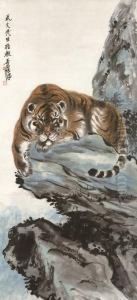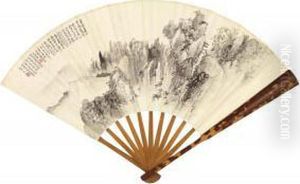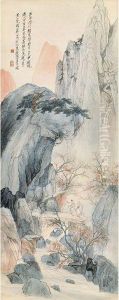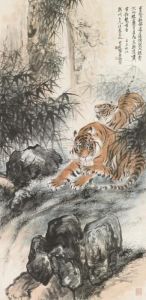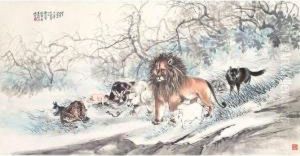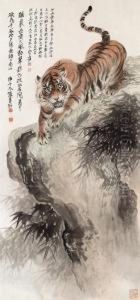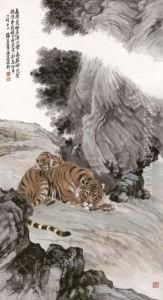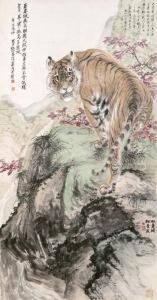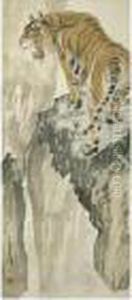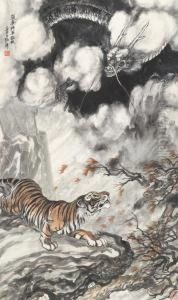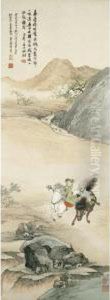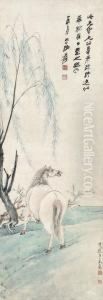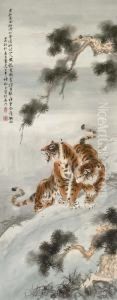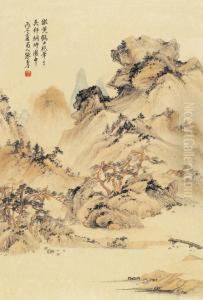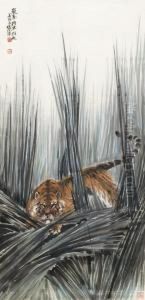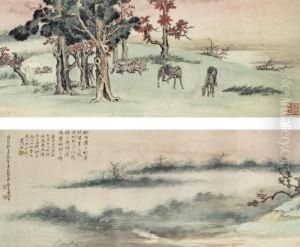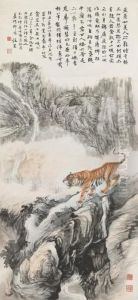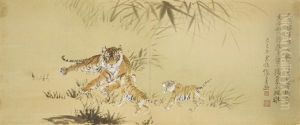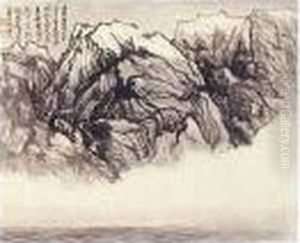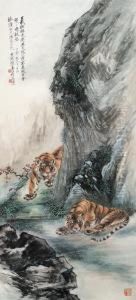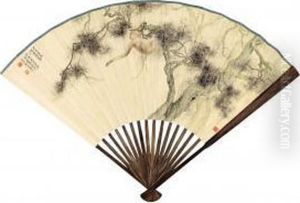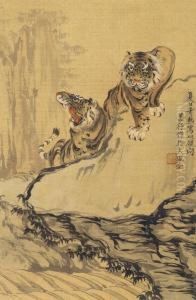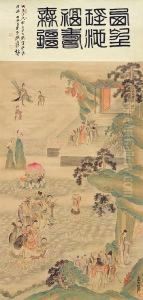Zhang Shanzi Paintings
Zhang Shanzi, also known by his birth name Zhang Zengxi, was a Chinese painter born in 1882 in Jiaxing, Zhejiang Province, into the well-known Zhang family which produced a number of significant artists. He is particularly renowned for his depictions of tigers and other animals, and he is often associated with his brother, Zhang Daqian, who is one of the most famous and influential Chinese artists of the 20th century.
Zhang Shanzi developed an early interest in painting and calligraphy, influenced by his family's artistic environment. His style was initially shaped by traditional Chinese painting techniques, but he later incorporated elements from Japanese and Western art after traveling extensively in Japan and studying European oil painting. This exposure broadened his artistic vision and allowed him to develop a distinctive style that blended East and West.
During his lifetime, he was highly respected as an artist and had a significant impact on Chinese painting. His work was characterized by a strong, vivid expression and a dynamic use of brushstrokes, which brought his animal subjects to life with a sense of vitality and movement. He was particularly adept at capturing the essence of tigers, earning him the nickname 'Tiger Zhang.'
Zhang Shanzi's contributions to art went beyond his own practice. He was also involved in art education and was a proponent of modernizing Chinese art. He taught at several institutions, including the Shanghai Art College, and influenced a generation of artists with his innovative techniques and teachings.
Unfortunately, Zhang Shanzi's life was cut short when he passed away in 1940. Despite his relatively brief career, his artistic legacy has continued to influence and inspire artists, and his works are highly prized by collectors and museums around the world. His unique blend of traditional Chinese aesthetics with modern principles has cemented his place as a significant figure in the history of Chinese art.

